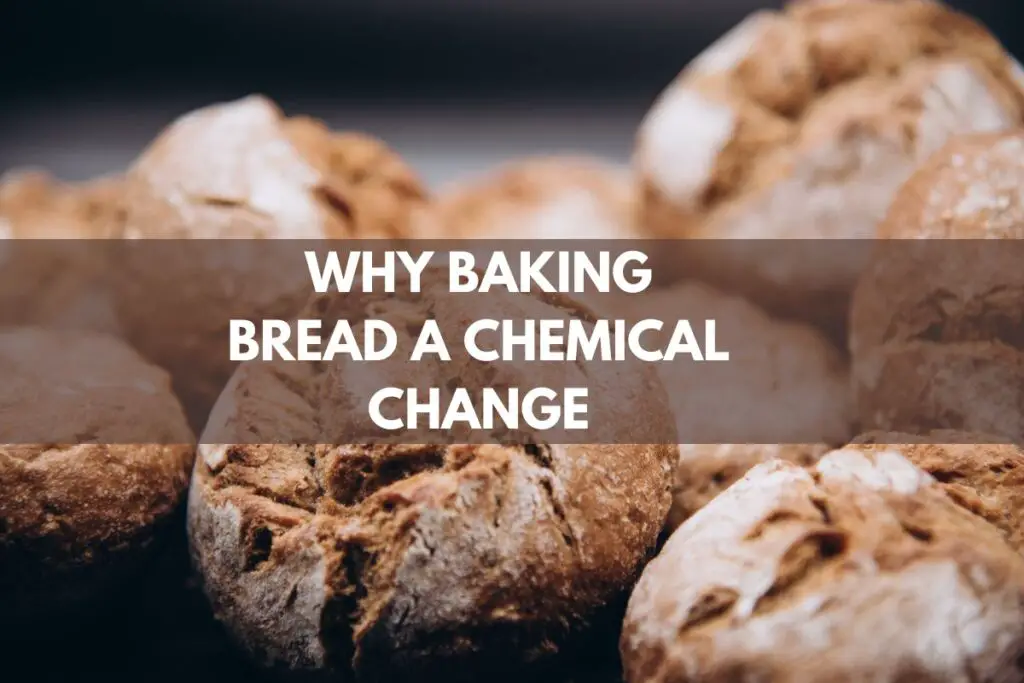When bread is baked, the gluten molecules become cross-linked, or bonded, to each other, creating a network that traps gases produced by the yeast, resulting in a light and fluffy bread.
Baking bread is a chemical change because it results in the formation of new substances, specifically carbon dioxide and ethanol. The carbon dioxide is produced by the yeast as it ferments the sugars in the dough, and the ethanol is a byproduct of this fermentation process. The combination of these two gases makes the bread rise and gives it its characteristic flavor.
When the dough is mixed, the flour and water start to interact and the gluten in the flour starts to form. This gluten gives the dough its structure and strength.
As the dough is kneaded, the gluten becomes more and more elastic. When the dough is placed in the oven, the heat causes the water in the dough to evaporate.

This makes the dough rise and gives it a light, fluffy texture. The gluten also helps to trap the gas bubbles that are created by the evaporation, giving the bread its distinctive texture. The starch in the flour also starts to gelatinize, which gives the bread its crust.
The Maillard reaction also takes place during baking, which gives the bread its flavor and color.
Baking bread is a complex chemical process that results in a delicious and nutritious food. The next time you enjoy a slice of bread, take a moment to appreciate the chemical changes that made it possible.
Is Baking Bread A Chemical Change?
Baking bread is a chemical change. The results of a chemical change are a new substance with different properties from the original.
Some examples of a chemical change are when water evaporates and when milk spoils. The causes of a chemical change are a change in temperature, a change in pressure, or a change in the concentration of a reactant.
The effects of a chemical change can be an explosion, a fire, or the release of toxic fumes. A chemical change can be reversed if the original conditions are restored.
Facts About Baking Bread
- Baking bread is a chemical change because it alters the structure of the flour. When flour is heated, the proteins in the flour change and this gives the bread a different texture.
- Baking bread also changes the flavor of the flour. The heat from baking caramelizes the sugars in the flour, giving the bread a sweeter taste.
- Baking bread makes the bread more nutritious. The heat from baking helps to break down the carbohydrates in the flour, making them more easily digestible for our bodies.
- Baking bread also kills any harmful bacteria that may be present in the flour. This is especially important if you are using raw flour in your bread recipe.
Conclusion
Baking bread is a chemical change because it involves a change in the composition of the dough. When the dough is heated, the proteins in the flour change and the bread becomes more solid. The bread also becomes more brown as the Maillard reaction occurs.
